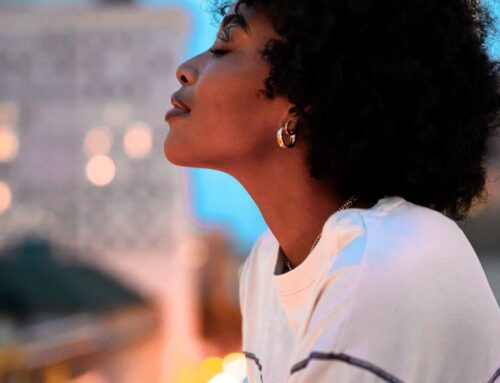When I first saw the trailer for Crazy Rich Asians, I thought to myself “here’s another movie flaunting the “you-don’t-got-what-I-got” lifestyle. I thought it would be a movie to reinforce the hierarchy of haves and have-nots. I can’t lie, I had projected, through my own insecurities, my particular satisfaction and/or dissatisfaction with the particular cards I was dealt—which I think is natural, because everyone is moved by a creative work by identifying with where they are and who in the work they can relate to. At the behest of a couple of friends, one of whom is Asian, I decided to give the movie a try—and it was actually better than I thought. I found myself laughing through many scenes and also learning a few lessons—a couple of which I will speak on here. Be warned, there are SPOILERS below.
The plot is one of what most rom-coms are: for a couple to go through various trials and come out on the other end. And like a sausage meat grinder, or a digestive tract, the processes by which the products come out the other end are arduous. The characters who guide these processes are:

Nick Young: the other protagonist and Rachel’s love interest. He is played by Henry Golding.
Eleanor Young: Nick’s mother and main antagonist, played by Michelle Yeoh
Ah Mah: played by Lisa Lu Yan a secondary antagonist and family matriarch is Nick’s father’s mother (nai nai) she is the “head” of the family
The aforementioned characters interact in Singapore when Nick (originally from Singapore), decides to bring Rachel back with him for his brother’s wedding. He doesn’t tell Rachel that he comes from old money, or that his family is “crazy rich”, and Rachel finds out to her disdain, that she doesn’t measure up to Eleanor’s expectations. While she initially finds some solace in the complements of Ah Mah, this all crumbles as various things about Rachel’s past come to the forefront and test the mettle of the relationship with Nick. The following “lessons” are what I perceived when watching the characters interact.
Lesson 1: Hurt people hurt people
Eleanor Young endures, as evidenced by scenes in the movie, disrespect and contempt, and then when in the position to relate to Rachel, treats her with disdain.
The first example happens in beginning parts of the movie, when we cut to a flashback of Nick Young as he was as a boy. He and his mother Eleanor are checking in to a snazzy hotel—possibly in London. When she approaches the desk to inquire about her reservation, the staff, which are all white, turn her away, telling her that all the rooms are booked. We get the idea from the way she is being treated that she is being discriminated against because she’s Chinese. After making contact with the hotel’s owner, we find that she is to own the hotel—and upon realizing their error, the hotel staff is flabbergasted. Eleanor uses this opportunity to deliver a jab to them, ordering them about.
The second example is the way Ah Mah treats Eleanor. Throughout the movie, Eleanor, the proud woman she is, shrinks in the presence of Ah Mah, who reinforces this relationship by talking down to her. At one point in the movie, Eleanor hires a private investigator to dig up dirt about Rachel, for the purposes of killing any favor that Rachel previously garnered from Ah Mah. As a result of this information coming to light (I will delve into it more specifically in the next section), Ah Mah rejects Rachel to the pleasure of Eleanor, Ah Mah still blames Eleanor for the fact that Nick picked the “wrong” girl.
The lesson here is that people who are hurt often tend to, rather than channel those energies to see how they can avoid someone else going through the same pain, impose their will upon others so that they are one step “higher” on the food chain.
Lesson 2: Culture and Race don’t always coincide
One of the many challenges regarding non-monolithic cultures is that the “rules” governing them depend on the landscape whereby the interactions take place. For Black people in America, there are often cultural divides that include, but are not limited to: nationality (i.e. a Black person who immigrated from Africa or the Caribbean versus Black Americans), customs (the food that some Africans eat Black Americans tend to be repulsed by), family dynamics (“third world” countries tend to be more traditional with father-led households with both parents, versus Black American households led predominantly by women with only one parent—the mother), and wealth (most immigrants tend to be merchant, business, or professional class, with families pooling incomes towards common goals) to name a few.
In the Crazy Rich Asians movie there comes a point where Eleanor and Rachel face each other, somewhat confrontationally over a game of Ma Jong (Chinese Dominoes/Chess). At this table, Rachel finds out that the reason Eleanor threw her so much shade is not because Eleanor grew up poor, rather because she is Chinese American; and we find something that a lot of people are aware of regarding Asian traditional cultural values—they are highly collectivist. While American values are highly individualist. And in collectivist cultures, there is a tendency of the individual person to sacrifice their own happiness for the overall happiness/cohesiveness of the group. In addition, Americans are perceived, and largely reasonably, as desiring short-term gratification over long-term stability. This is not hard to see in our media and marketing, which often portray the American family as making disjointed decisions, in addition to being high on the rates of divorce and separations.
The lesson here is a derivative of Oshay Duke Jackson’s “skin folks aren’t necessarily kin folks” and Let’s_B_Frank ‘s mentions of “hardware (one’s biological and phenotypical race) versus “software (one’s culture and norms)”. It is apparent that one cannot control one’s biological race, but one can control what one adheres to with regards to cultural norms and practices.
Lesson 3: People with strong family bonds want to marry into families with strong ties.
I mentioned previously that Eleanor hired a private investigator to dig up dirt on Rachel. The information that she uncovered was that Rachel was a “bastard” female of sorts—born out of an affair that her mother had with another man—and that her mother lied to her about her father being dead. This is a big no-no to traditional Asian cultures that hold tantamount female sexual restraint, especially when dealing with higher status families.
In addition “the sins of the father” hold here—people tend to repeat, on average, the family “demons”. So a mother of a son born into wealth has a vested interest in protecting that son from someone who would compromise the family. And from the point of view of Eleanor, an alley cat was trying to live with a house cat. Imagine being from wealth and seeing your son with a girl whose mother was single because she cheated, and what that may imply for your son’s future.
With regards to the seriousness that Americans treat family ties, I located data on a lawyers’ website ( https://www.wf-lawyers.com/divorce-statistics-and-facts/ ) that contains a compiled list of American divorce statistics. Some that stood out and are relevant to the discussion here are:
- 60 percent of all divorces involve individuals age 25 to 39 (the age range of the protagonists in the movie)
- Wives file for divorce on average at a 66 percent rate—up to 75 percent in recent years
- Daughters of divorced parents have a 60 percent higher divorce rate than children of non-divorced parents while sons have a 35 percent higher rate
All of the above statistics show that Americans generally treat marriage with levity; and any culture where traditional marriage is a norm and significant of family bonds, would shun the idea, especially if the son is a wealthy male in light of female divorce behaviors, of their son getting married to an American woman, regardless of her biological race.
The Crazy Rich Asians movies should be a lesson to us all about the patterns that play out in interpersonal relationships, especially across cultures, and how different value systems affect why people treat each other the way they do.









Leave A Comment